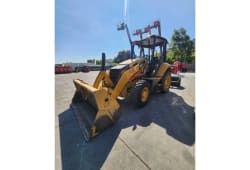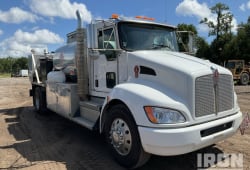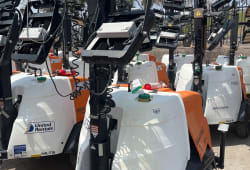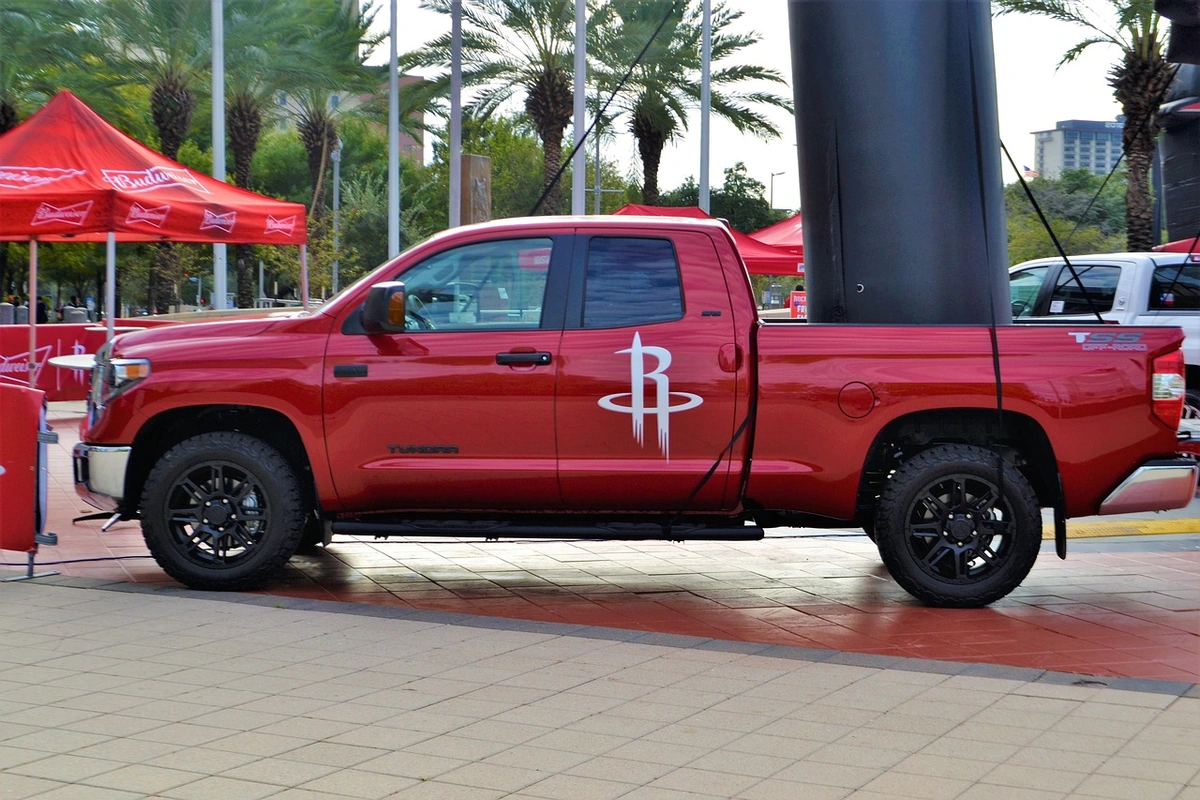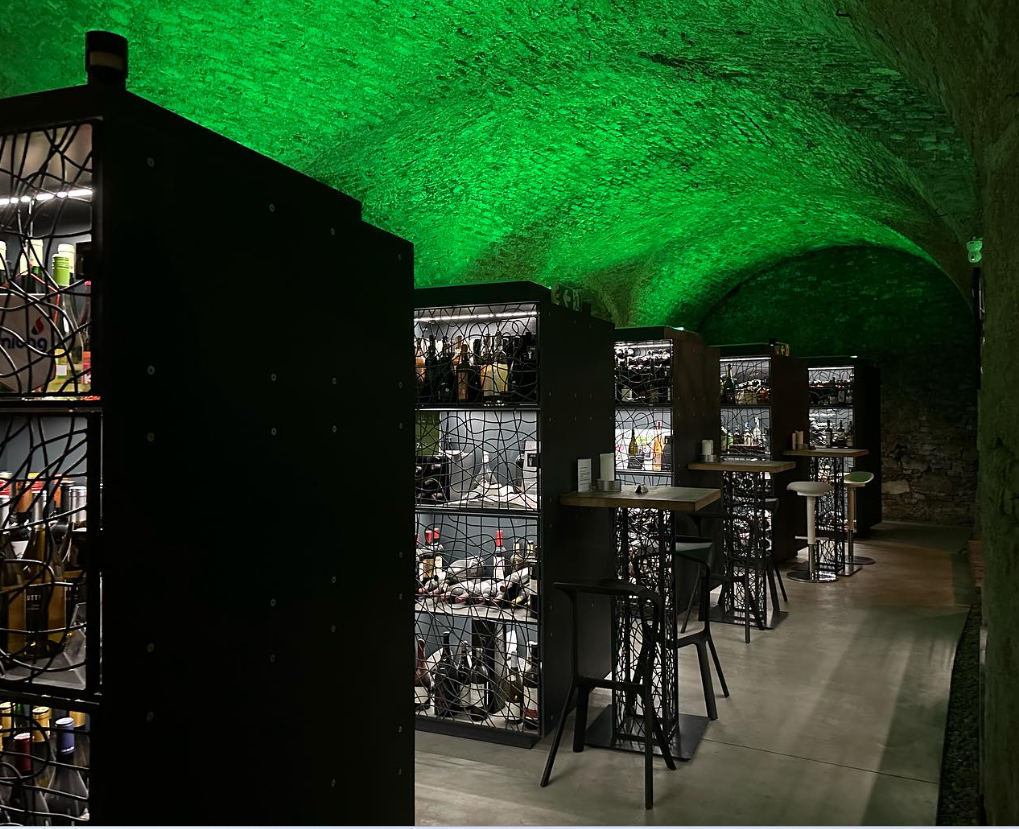Navigating a Stormy Equipment Market
25 Min read
)
November 9, 2022
How some of the largest and most sophisticated fleets in the US are handling supply chain disruption and volatility in the equipment markets.
Our COO Aaron Kline had the opportunity to interview Arne Ruud of Atkinson Construction and Prof. John Hildreth from WCU at October's AEMP EquipmentShift conference in Cincinnati. Arne Ruud is the Director of Public Procurement for Clark Construction Group, and the Corporate Equipment Manager for Atkinson Construction. Arne started his career with the Seabees, driving bulldozers in Vietnam. He's managed fleets with FlatIron and Johnson across his 40 plus year career. He chaired the AGC Equipment Committee, and he was one of the first members of ACEM. John is the Kimmel Distinguished Professor of Construction Management at Western Carolina University, where he focuses on various construction projects, equipment, asset management, cost estimating, and production planning. John received his PhD from Virginia Tech, where he studied with Mike Vorster, and he's currently conducting research on public equipment management with State Departments of Transportation. Here was the conversation.
Aaron:
Gentlemen, thank you for joining us this afternoon. At the risk of belaboring the obvious, since COVID began, supply chain turmoil has affected everyone's business, whether it's in acquiring parts, equipment, labor, you name it. Supply chain indicators are coming off of their peaks from three to six months ago, but we're still nowhere near pre-pandemic levels, and OEMs are still reporting anywhere from a 6 to 24 month backlog for new equipment. Combine all of that with talks of recession on the horizon, continuing war in Europe, and turmoil is going to be part of our lives for probably the next few years. That uncertainty creates challenges and opportunities in procurement and disposition of equipment, and that's what we're going to talk about today.
Let's start with the equipment type of procurement. With our Tier 1 OEM partners reporting up to 2 year backlogs, have your organizations considered acquiring equipment from Tier 3 OEMs or acquiring equipment overseas?
Arne:
We've looked at both, really. I think we're really struggling with the Tier 1 OEMs - the ones in the United States. In the three years since COVID started, on the construction industry side of the world, we've figured out how we get our jobs done despite supply chain issues and labor shortages. When we talk to our OEMs and we continue to hear about issues with absenteeism and parts supply, it just doesn't ring true. I think they're creating a vacuum for Tier 2 and Tier 3 OEMs to come in. The Tier 1 OEMs, at least the ones we do business with, seem to be... I wouldn't say happy, but they're satisfied with how things are going because everything they make is getting sold.
They don't seem to be running a lot of the second shift work needed to unblock the backlogs. But I think the danger for them is that we still have to do our work and when we need new equipment, you're going to see some of the Tier 2 or 3 OEMs from offshore come in and be able to fill that void. I know we have a bunch of our OEM partners in the audience and I hope they don't throw something at me, but we're dispirited with some of our OEMs
Aaron:
John, what have you seen from public fleets?
John:
Well, they operate a little differently, in that their procurement is largely through a low bid, competitive process. But we are seeing some of the overseas manufacturers like Sany moving into the US and making headway into public markets. They're also making their machines more palatable by assembling in the US.
As Arne pointed out, it's going to come down to what's available. For public fleets, if it's low bid, meets spec, and it's available you'll see the Tier 2 and 3 OEMs winning the market share of business.
Aaron:
We've seen penetration in the rental markets with OEMs like XCMG and Sany. Do you think that's a viable strategy for them to enter the United States?
John:
I do. I think it gets people familiar with their machines, right? So if you're not familiar, you might not want to go out and purchase one right now. But if you rent it and it works well and it works for you, now that may be a more viable option for you in future when you're ready to buy.
Arne:
Probably the biggest obstacle for Chinese and Korean OEMs is the lack of quality dealerships in North America. If we're renting equipment, we're going to get it from somebody that will make sure it's not down on site. If we buy and we have to go back to relying on the dealerships, then product support and parts availability become a huge concern with these non-US OEMs.
But to John's point, I think the danger to the Tier 1 OEM is that the more familiar people get with these new brands, the more acceptable they're going to be going forward.
Aaron:
Electrification and sustainability are topics that have been very popular here at the AEMP and across the industry. We've got a couple of folks at Bauma right now, and there's electric equipment everywhere. How have your sustainability goals changed given the current market? Are you considering buying electric machines sooner? Are they more easily accessible? Are you pushing it off because it's easier or harder to get those machines?
Arne:
Sustainability wasn't even in our vocabulary five years ago. We now have a Director of sustainability, particularly on the Clark side and also on the Atkinson side. And at this point in our journey, we're mostly at the end of the recording stage: how do we quantify and record our carbon footprint or go to zero emissions? We've looked hard at electric machines on the construction equipment side and it's primarily a compact construction equipment market today so the market isn't quite there for us. For those compact machines, we don't have issues with their performance -- there are actually really nice benefits beyond emissions like noise control. The bigger issue for us is multi-shift jobs and being able to cover continuous operations. The time it takes to recharge the batteries is a problem for us.
In the mining business, we've used electric machines for a long time, especially at the potentially gassy mines. Since we've been running those operations for years, we just have swappable battery trays. If you have one machine, you probably have three battery trays. You've got two charging while you're using one so you can really work around the clock. They'll generally run about an eight-hour shift with a battery.
So that's probably our biggest barrier on the construction side -- figuring out near continuous operations when you have a charging requirement. Are you going to have two machines at your job site to do the work where one would have worked if you're running on diesel? We're certainly looking at it. We're partnering with some of our rental companies to try to figure out how to do that. We don't have a ton of clarity from our OEMs on how we're going to use larger equipment on multi-shift jobs just yet.
Aaron:
How are you partnering with the rental companies to achieve sustainability goals?
Arne:
On a heavy civil job, probably anywhere from 40 to 50% of the equipment is rental equipment - short term rental supply. Some of our rental partners are sufficiently advanced with telematics that they are actually giving us reports on carbon emissions. The reporting is mixed fidelity -- sometimes it's just cat class average fuel consumption times hours worked, which isn't very accurate -- but it's something. As this reporting gets more accurate, I see it as a strong differentiator for the big 5 rental companies that's widening the gap from the smaller players.
We can partner more deeply with these companies because we're the ones fueling these machines. We're going to have real time knowledge of the machines' daily consumption, so that number can be a little closer to the truth.
Aaron:
Does that reporting on sustainability influence rent versus buy decisions?
Arne:
At this point, probably not. We've got a long time before significant adoption of electric yellow iron - I think the on-highway vehicles will come a lot sooner. But right now, as I mentioned earlier, the electric machines are limited in size and in runtime so operational requirements take precedence over sustainability for us.
But I do think there's a real opportunity to become a market leader through running a zero emissions fleet. We have many emissions-conscious owners out there like Microsoft and Amazon who are building headquarters campuses and data centers with a strong sustainability component. In five years, it's not going to be an opportunity -- it's going to be the price of admission.
Aaron:
John, have you seen sustainability goals shifting the public fleets?
John:
Well, I certainly have because my work is largely isolated to State DoTs. When the states come out with initiatives for emissions reductions, they're immediately rolled into the DoT because they tend to be the state's largest source of emissions. The heaviest push right now is in California, but other states in the northeast and middle east are starting to follow suit.
We tend to equate sustainability with electricity and I think that's not the most accurate picture because we'll need a broader approach. There's a very limited use case for electric heavy equipment, and remember we have more solutions than just electric. There's hydrogen and renewable diesel, as well. I think the longer-term solution will be hydrogen fuel cells. You get the benefits of the electric propulsion, reduced energy costs, reduced fuel costs, you get to reduce maintenance costs, when you promote an electric propulsion system. Plug-in batteries just won't work for more remote locations and undeveloped job sites, and I'm optimistic that in a few years, we'll have hydrogen fuel cells capable of providing electricity to drive propulsion systems.
We've definitely started down an exciting path. There is a ton of talk about electricity at this conference and across the industry: we're seeing a bunch of electric equipment being rolled out and it'll be interesting to see what's at ConExpo.
We're going to need multiple tools to solve our emissions problems. I'm watching the Ford Lightning roll out pretty closely because I think it'll be a bellwether for the rest of the industry. It's not just the vehicle's performance but as much about how we incorporate it into the industry's business. How do you handle someone recharging at home and how do you reimburse them for that? What about the capital equipment required to support charging in people's homes? If we get that right, I think we'll march down the electric road much quicker. If we get it wrong, we'll leave a bad taste in people's mouths and slow us down. I think it's a broader approach than sustainability equals electricity.
Arne:
In California, we've got projects that require the use of renewables. But California is also one of the states that has a subsidy for renewable fuels at the refinery and at the distribution level. And we've had great experience with CK rated fuels and higher - it's classified as a diesel fuel as opposed to biodiesel. We don't have the issue with storage and it's totally interchangeable with regular diesel. The engines operate a lot better because of the cetane rating and because of the way they clean burn - you'll find anywhere from 25 to 50% less regens.
John talked about hydrogen fuel cells, but I know there are companies out there experimenting with converting engines from diesel to burning hydrogen. Basically, we're just changing the cylinder head - the block, piston, and everything else stays the same- and they burn hydrogen with great power and responsiveness. Once you get the storage system figured out and get cleared by the local fire departments you should be in business (when you say hydrogen people start thinking of the Hindenburg). Small storage facilities aren't a problem because leaks will dissipate rapidly, but larger storage facilities will require more oversight.
Aaron:
We've talked a little bit about tier-three OEMs, now let's talk about the used equipment markets. CEMEX bought a fleet of used ready-mix trucks last year for the first time in their company history because they couldn't get new machines. Have you looked at the used equipment market? Is it a viable channel for getting machines on-site?
John:
For the public plates, procurement laws all require the acquisition of new machines so they're not typically willing to buy used.
Arne:
Speaking strictly for our companies, we will entertain low-hour, late models used if it's readily available. But there's not a lot of them in the marketplace. When you can't get a new machine you need for a job and there's a 2-year lead time, you're forced into one of 3 scenarios. You either find something that's available from a Tier 2 or 3 OEM, you look for a late model used, or you spend the money to increase the service life on your existing equipment in your fleet. Now all of those come with their own little challenges. Our operators are becoming much more flexible with the types of machines that we can operate, so we're not necessarily being pushed by the operations teams into a particular manufacturer. I think there's opportunities for folks that are outside our main OEM suppliers to probably fill in the gap.
Aaron:
You mentioned partnering with the rental companies, not just for sustainability goals, but also in taking some back orders for their equipment. Sounds like there has been some over ordering to try to game supply chains and there are opportunities for operating fleets to take up the slack?
Arne:
When we started looking at the bulk of our work and how challenging it was going to be to acquire a fleet, one other solution that's always available is to rent the equipment. I don't know that we've bid for a job in the market growth in the last couple of years that couldn't be filled entirely by rental fleet. Particularly on the lighter side, but they've also got excavators up to that 70,000, 80,000 pound class, four or five yard wheel loaders, and motor graders.
In some cases, our rental partners have placed orders with the OEMs 12-18 months in advance that they've ended up canceling. We have good relationships with a few of our rental suppliers who allow us to step in and take those orders for them. The rental companies have written cancellation clauses into many of their contracts, so it's a win-win for both partners.
Aaron:
So let's change gears a little and talk about disposing of the fleet. With the supply chain crunch, prices are up 30% year over year. They've come off their highs just like the rest of the supply and demand chain indicators, but fleet pricing is pretty good right now. Have you considered capitalizing on the equity in your fleet by disposing the equipment earlier in this market?
Arne:
We've had to take a variety of approaches. If we have our druthers we're buyers of new equipment, but when that's not an option, we'll do things like RPOs. We don't use leases as much now because of tax law changes - the advantages of leasing are going away.
Aaron:
Have you changed the timing of this disposal based on pricing?
Arne:
With the US market as high as it is, the temptation is to probably sell off some of your stuff early. But if that equipment is part of your operating plan, you're basically selling something for 30% more than you might have gotten a couple of years ago and then buying a new one if you can get it for 40% more - that isn't going to make a lot of financial sense.
But it has changed some of the things we look at. I think we're more apt to spend a little extra money on the maintenance and upkeep and hold the machine past where we would normally keep it on paper to see where the market's going.
We've been preaching utilization, utilization for years. We could kind of see the storm coming a couple of years ago and we tried buying ahead of the market - putting some extra fleet on the books without having 100% chance of using it. That ship has sailed now but I don't think it's necessarily a good plan for success - trying to time the market is never a good idea.
Aaron:
John, who have you seen in the public markets as a model for disposing assets?
John:
The first one that comes to mind is Alabama DoT. They've really set themselves apart in terms of their equipment program. One of the real skill sets of DoTs is their buying capability - they're very good at procurement, but less so at disposal.
Alabama DoT has capitalized on their procurement capability by turning over their fleet much earlier than others. They'll turn assets in 3 years (as opposed to 10-12 years you typically see in public fleets) and they're very open about the fact that they're selling machines for more than they bought them. Part of that success is attributable to the market conditions, but other DoTs are watching what they're doing.
Aaron:
While we're on the topic, what are you seeing municipalities doing differently now versus the traditional disposal model?
John:
The traditional model is selling off the DoT lot at public auction. We're seeing a lot of folks look very differently at that because they're realizing, they're not getting the value out of the asset that they could. What approach they choose depends on whether or not they can get the value back. Many DoTs operate under state procurement laws, so if they sell an asset, the value that is realized may or may not come back to the fleet. It takes a long time to change state procurement rules.
The departments that aren't getting the value back from a public resale of an asset are looking at things like trade-ins or guaranteed buyback. Tying a buyback into the purchase of a new piece of equipment, then they can attach that value to that purchase agreement and get that value back into their fleet. That's certainly not new to the private world. But that's something public folks are starting to understand as a way to recoup fleet value. Buybacks also help manage your fleet size because they're one in one out. They also help manage fleet age because there's a set disposal timeline.
The departments that do recoup the value from a public sale are looking at selling differently. They've started to look more carefully at buyer profiles and think about how to attract those buyers and make buying more convenient for them. DoTs have traditionally taken zero risk and assumed all convenience on their side, but they're realizing that coming off that position a little can really benefit them. I've seen State DoTs shifting to online sales. Utah has what's basically a retail lot in Salt Lake City where buyers can come at their convenience and drive it off the lot, just like a used car lot. So we see other behavior besides the traditional public auction.
Aaron:
That's great. So let's talk a little bit about disposal decisions from an academic and a practical perspective since we have a practitioner and an academic here. We're all Mike Vorster students and we understand trade offs between operating and owning costs and how that influences the disposition decision. But when you're in a turbulent market, where acquisition costs are up influencing ownership costs and fuel prices are up influencing operating costs, what's the pragmatic trade off there? How do you think differently about disposing of equipment in this kind of market?
Arne:
I'll take the practical academic side of this and give you the best of both worlds. Mike and I have known each other for over 40 years and I have a lot of respect for his work, but most of his academic work comes from the surface mining community. They will do unique things like rebuild rigid frame trucks and big wheel loaders for a second or third life.
One major difference from that approach now is the quality and longevity of our equipment - it's much closer today to what we see on the automotive side. When I first started working on equipment, we'd turn our pickups at 75,000 miles because we'd run into major repair expense issues like engines and transmissions beyond that. We're now over 200,000 miles on our pickups and that's not even a requirement to dispose of them.
The gospel according to me is if we do world class preventative maintenance on our equipment the failures are going to be relatively rare. We just don't have a lot of engine failures like we used to at 7,500 hours on our excavators and wheel loaders. Those machines now have 15,000 hours on them and I'll run some machines even longer. I've got cranes with 27,000 hours on the original engine. The new smart money is focusing on taking care of what you've got to maximize the number of hours out of that machine. Instead of disposing of the fleet on a calendar year basis, we'll look closely at our assumed life and make sure we dispose of it with some useful life remaining to avoid overhauls. So for example if we think it's a 15,000 hour machine, we'll try to sell it at 12,000 hours. In today's climate we might push some extra hours or an extra year out of those machines, but I think that'll be the new thinking going forward.
John:
You're right Arne, the quality of the machines is significantly better than it has been but I don't know that we always take advantage of that. I was with a company last week looking at some equipment and they said, "Look, we sell these to 10,000 hours, we keep it 10,000 hours then we get rid of them." But we did the academic math together and the sweet spot is 15,000 hours, just like you were saying and I thought this would be a great win for them. But instead, they decided to keep it to 12,000 hours, because they didn't trust it to 15,000. You get much more use out of the machine, you don't have replacement costs, but it's a higher investment in the preventative maintenance program, and I'm not sure fleets are taking advantage of that knowledge.
From an academic perspective, remember that while keeping the machine an extra year or an extra 1500 hours isn't a huge cost differential, you have to consider your revenue rate for that machine. If you've run your rate calculations based on that sweet spot calculation but now you're keeping the machine beyond your planned disposal life, you need to consider adjusting your rates accordingly
Aaron:
One of the benefits of market turmoil is that it forces us to reconsider some of our previous assumptions and run these calculations again.
So let's talk about recession. The CMAA conference two weeks ago in San Diego included an economic brief. The punchline was that the supply chain is looking better, but sentiment across the board is negative, everything from SMB to CEO to consumer sentiment, which is strongly correlated with a recession. The general consensus is that we're going to hit a recession sometime early next year, and it's probably going to be about 12 months. So having said that, how is that recession on the horizon influenced your disposition strategy? Is your business looking at holding cash? Are you shifting more towards rentals to keep some of those machines off the books? Are we planning on holding the fleet longer to avoid the dip in the next 12 to 24 months?
Arne:
A couple thoughts on that. Everybody is a little nervous about 23 and 24. Infrastructure funding seems to be on solid ground and there seems to be a bipartisan willingness to spend money on infrastructure. Clark is heavily involved in non-residential building and infrastructure development and that market is still pretty good.
The residential market is the one that scares me because I think it's the canary in the coal mine. When the whole residential construction market slows down, the contractors who have been making a good living grading and utility work for those projects are faced with some tough decisions. They often try to migrate to our part of the world in highway-heavy work and unfortunately that's usually out of desperation. They want to keep their people working and keep their fleets, but they're entering a market they don't really understand and will end up taking work that isn't great and may not be profitable. This behavior drives down the other markets outside of residential work for everyone else, and that's the downside I'm planning around.
We've been trying to right size our fleet assuming this is what's going to be expected to happen over the next few years. I've seen this cycle repeat itself many times in the past and we need to be prepared for it.
Aaron:
So, playing that back, right size the fleet, maybe rely a little bit more on rental to cushion some of the downside, as well. John, what do you see from the growth of public fleets?
John:
Public fleets haven't necessarily changed their behavior yet, but it's on their minds. They're certainly looking at holding the fleet longer and delaying new purchases because they don't know how their work is going to shape up. The mindset is exactly that - own for average times and rent for the best of times.
Many of the public fleets decisions are driven by tax revenue. If North Carolina has got a $30 million capital program, purchase of a new fleet is contingent upon the tax revenue, so if that revenue isn't there, they don't buy.
Aaron:
Last question - CONEXPO is coming up in a few months. Are you going and if so, what are you looking forward to seeing?
Arne:
I think this year is going to be an interesting year. We're probably going to see a lot of the electric equipment like we're seeing at Bauma. But since Bauma and CONEXPO are so close together I'm curious to see who's going to show up for CONEXPO. A few of the OEMs have decided not to attend but rather put all their eggs in the Bauma basket. Regardless, there's no better place to catch up with all your suppliers in one place with one hotel reservation. And since I'll go almost anywhere for food I'm looking forward to it!
Aaron:
Maybe add a little extra bump in the travel budget to put a hundred on black, right? John, how about you?
John:
I hope to go but have not made solid plans yet. I'm really fascinated by how fast the electrification pressure is going. Just a few years ago we were looking at electrification and automation as things on the distant horizon. My money would have been on automation to go faster but electrification just slingshot around automation, and I think that's really interesting from an industry perspective.
Aaron:
All right, I think we're on time. John and Arne, thank you very much for joining us!
Here's a structured table summarizing the key points discussed in the conversation between Aaron Kline, Arne Ruud, and Prof. John Hildreth regarding navigating the stormy equipment market:
:format(webp)) This table provides a clear overview of the main discussion points and strategies discussed by industry experts regarding the challenges and opportunities in navigating the stormy equipment market.
This table provides a clear overview of the main discussion points and strategies discussed by industry experts regarding the challenges and opportunities in navigating the stormy equipment market.



